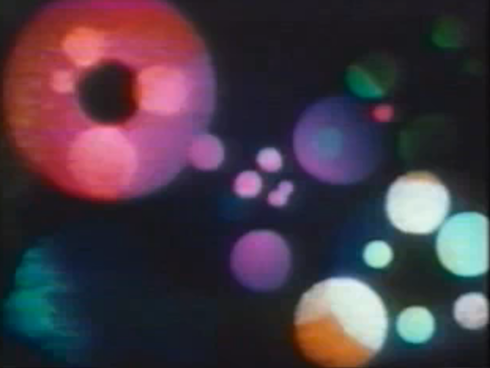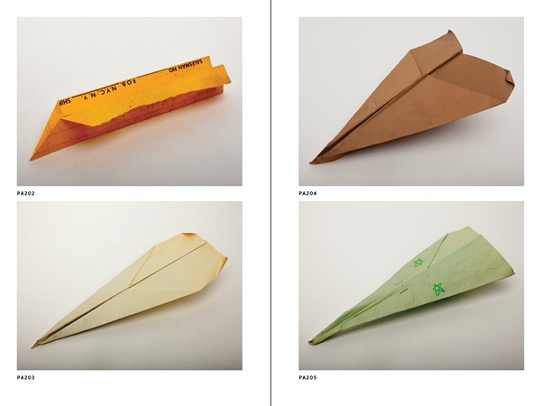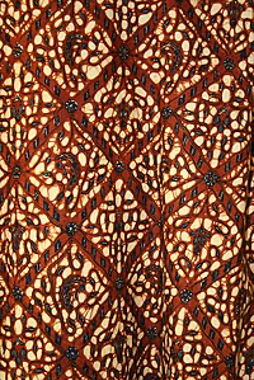“We shall count as real what we can use to intervene in the world to affect something else, or what the world can use to affect us.” – Ian Hacking, Representing and Intervening: Introductory Topics in the Philosophy of Natural Science
“Collecting is a form of practical memory, and of all the profane manifestations of ‘nearness’ it is the most binding.” – Walter Benjamin, The Arcades Project

Harry Smith’s Early Abstractions (1939–1956) is a difficult set of films to make sense of, or rather, a “sense” is all we get from these films. Its synesthetic elements, meant for a sensation to be perceived simultaneously by one or more other senses, makes a sensory demand on perception which tends to override any value to the image not explicitly formal. However, in New York of the 1950s, Harry Smith considered himself to be an anthropologist rather than a filmmaker. Therefore, dissociating his contemporary practices from a formal understanding of the abstract animations which he created results in a loss of value or an incomplete understanding of his cinematic images.

Harry Everett Smith was a visual artist, experimental filmmaker, bohemian, mystic, and self-taught student of anthropology who became an important figure for the Beat generation scene in New York City, but most importantly, he was an inveterate collector. Most influential for his Anthology of American Folk Music, Smith extensively collected out-of-print commercial 78 rpm records, string figures, paper airplanes (see Figure 2), Seminole textiles, and Ukrainian Easter eggs. As a filmmaker, his collection practices greatly pervaded his understanding of the purpose and value of the cinematic image and the spectatorial relationship to the image and apparatus. The visual complexity of Smith’s Early Abstractions derived from a technique of textile dyeing called batik dyeing (e.g. see Figure 3) that he practiced on the material strip of film itself—thereby drawing attention to the film strip’s involvement as an object and a commodity in the very process of cinematic image-production and the very material relations this commodity shares with the image. In doing so, Smith’s Early Abstractions brings together a Marxist and an anthropological concept of the commodity fetish while re-concretizing the very process of abstraction vis-à-vis that of collection.

Marx defined commodity fetishism as the perception of social relationships operating between objects (see Marx et al., 1990). As art moves away from being the product of a cult-based society towards being that of a bourgeoise one, according to Peter Bürger’s Theory of the Avant-Garde (see Bürger 1984), it is separated from the source of its labor, thereby losing its status in the praxis of life and gradually adopting an autonomy from the social sphere which, in turn, results in a commodity fetish for the object of art produced by bourgeoise society. Having lost any kind of use value associated with its production in a more cult-based society, the social relations of such an art object operate purely on the plane of object relations. The cinematic image dissociated from the object of its representation and the apparatus of its production/inscription could be understood as the bourgeoise art of the 20th century, except for the material relations that Smith’s film strips establish with the image and its viewers. Through the process of batik dyeing the film strip, Smith incorporated the medium of the film into the production of the object and the object itself. The image produced through the optical projection of this dyed strip of film is a geometric progression which obliterates distinctions of background and foreground, between individual developments or a linear, sequential progression of time and does not require an active perceptual engagement, depending instead on a sensorial, and especially on the haptic, engagement. While moving away from any use or exchange value of the image, it devises and integrates a system which does not require the external codes of representation that is integral to the separation of the image from the object. Rather, this newly devised system integrates the medium into the object through the process in a “completeness” that Walter Benjamin (2002) discovers through the historical system of the collector’s object of collection. In such construction of this new system, Harry Smith was influenced by his French historical avant-garde counterparts.
Burger understood the historical avant-garde movement of the early 20th century in France to be a direct response to and an attempt at breaking away from such a bourgeoise autonomy of art. Avant-garde artists such as Marcel Duchamp were trying to move away from the kind of social relationships embedded within a commodity fetish of art objects by questioning the nature of the individual artist’s relationship to art and to its viewers. And Surrealist cinema during this time played an important role in furthering these questions (Duchamp himself created the Surrealist-Dadaist experimental film Anemic Cinema). However, the concern with the commodity fetishistic tendencies of art of the French Surrealists date back in time to the 1830s with the French colonization of Algeria–a result of which was the rise of the professional “collectors” and the transport of great numbers of artifacts from the colonized lands to be displayed in the ethnological museums of France. Severed from the sources of their production and labor, these objects saw the rise of aesthetic objects as commodities as well as the beginning of the critique of this commodity in the avant-gardists. It comes as no surprise that Surrealists such as Andre Breton identified as collectors in their own lives and art.
Smith was not only acquainted with but also greatly inspired by the historical French avant-garde. Smith’s interest in his French counterparts was not simply rooted in the sensorial and mystic but rather had its source within this ethnographic-anthropological project of history originating in France and shaping the perception of the avant-garde. Through the mummified isolation of the collector’s object, Harry Smith also understood the representation of the cinematic image, isolated from its object of representation. The patterns produced by the optical projection of his dyed film strips with its synesthetic influence over the viewer’s perception did not separate the object of labor from the source of its production but rather worked the medium of film into the ideology of the image. The film strip was directly used to not only produce the cinematic image but also to exert the kind of sensorial hold the image has on the viewer. Even before the 1970s, when apparatus theory gained attention and focus shifted to the role of the cinematic apparatus (mainly the projector and the camera) in ideology, Smith was experimenting with the ideological grip that the apparatus (film strips) had on the spectator, especially in animation. Smith’s formal understanding of abstraction in animation took into account the role of its medium intricately associated with its image in the formation of a new sensorial system and looked to the kind of value imparted by the collector to his object. The questions he was asking of his experiments – regarding the commodity fetish of the art object, the status of the cinematic image in its mummified isolation separated from its source of production and use value and the value created by the material relations of the film strip to the image. The questions posed were rooted in the gaze of the collector. So, today, when we look at the film strips of Early Abstractions preserved at the Academy Film Archives, it is necessary to look at them in conjunction with the ephemera collected by Harry Smith, the collector and anthropologist, to derive any “sense” of what cinematic image and movement meant for his work.
References
Benjamin, Walter (2002), The Arcades Project. Cambridge: Belknap Press.
Bürger, Peter (1984), Theory of the Avant-Garde. Theory and History of Literature, v. 4. Manchester: Manchester University Press.
Marx, Karl, Friedrich Engels, Ernest Mandel, Ben Fowkes, and David Fernbach (1990), Capital: A Critique of Political Economy. Penguin Classics. Harmondsworth: Penguin in association with New Left Review.
Srijita Banerjee is a first-year Ph.D. student at the Cinema Studies Institute at the University of Toronto. Her research focuses on the influence of collection practices originating from the French conquest of Algeria and its influence on visual culture, especially neo avant-garde cinema during the post-war period in North America. Srijita holds a MAPH degree in Cinema Studies and Art History from the University of Chicago and is an Associate Editor at the Journal of Arts Writing for Students, Intellect. When not thinking about the avant-garde, she can be found reading the works of Walter Benjamin for her reading group.

Early Abstractions, Films 1-3 have been preserved several times, preserved copies exist at Anthology Film Archive in New York and Center for Visual Music, Los Angeles. Harry’s own copies of all the Early Abstractions films are at Anthology, where he placed many of his films.